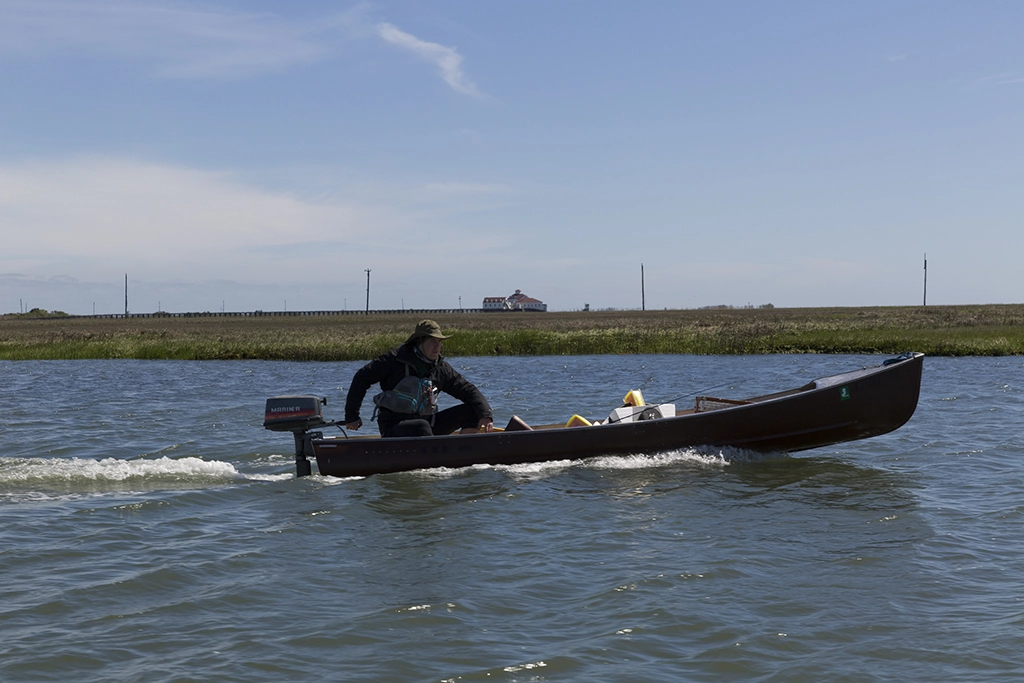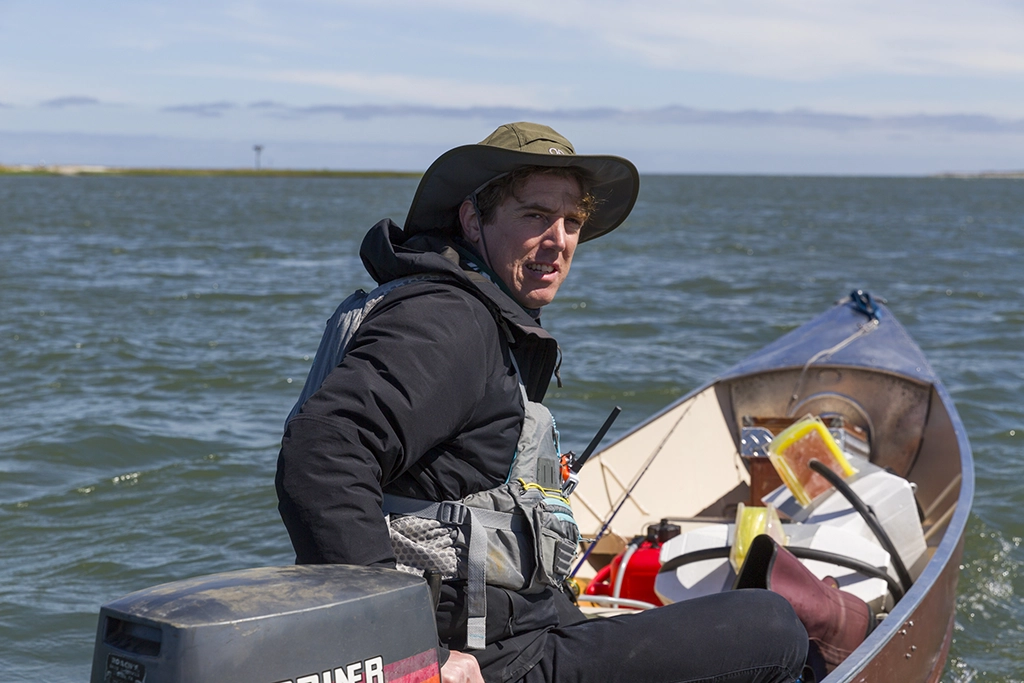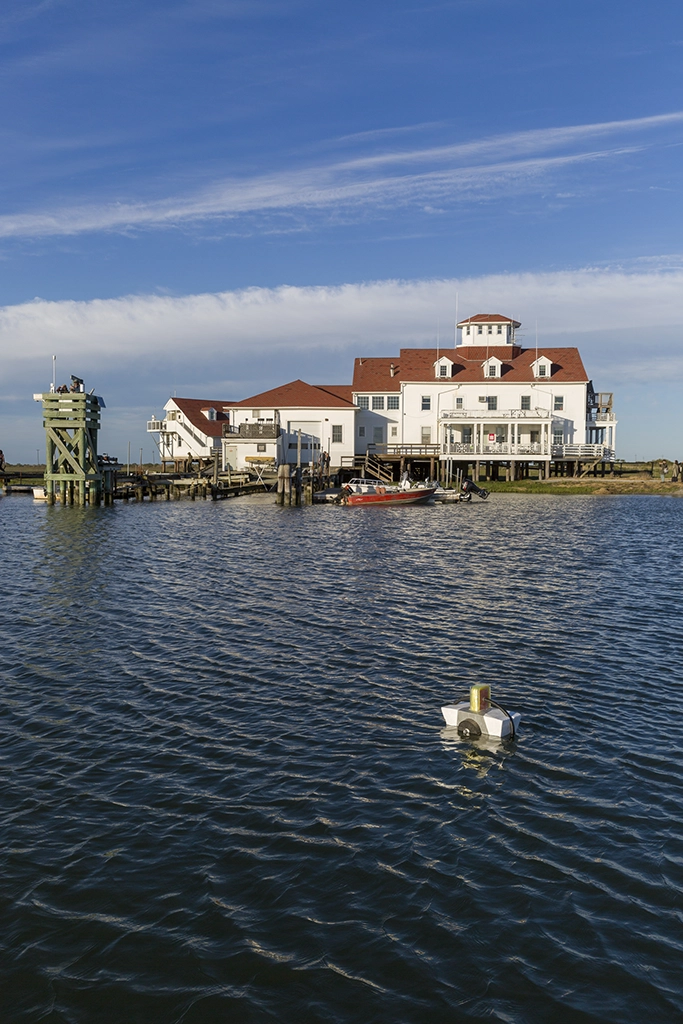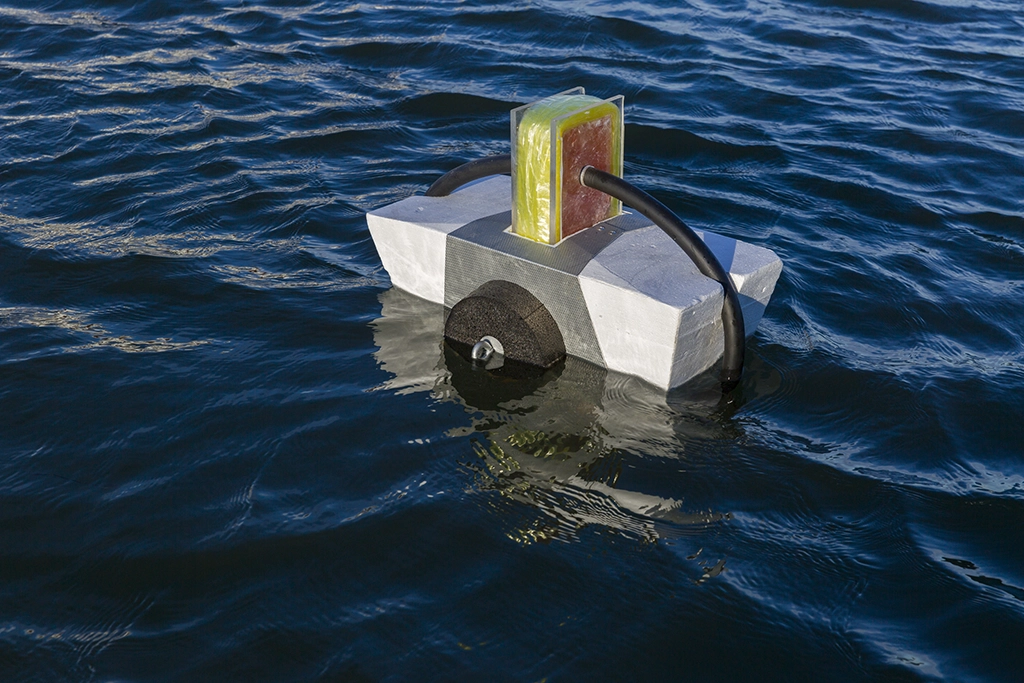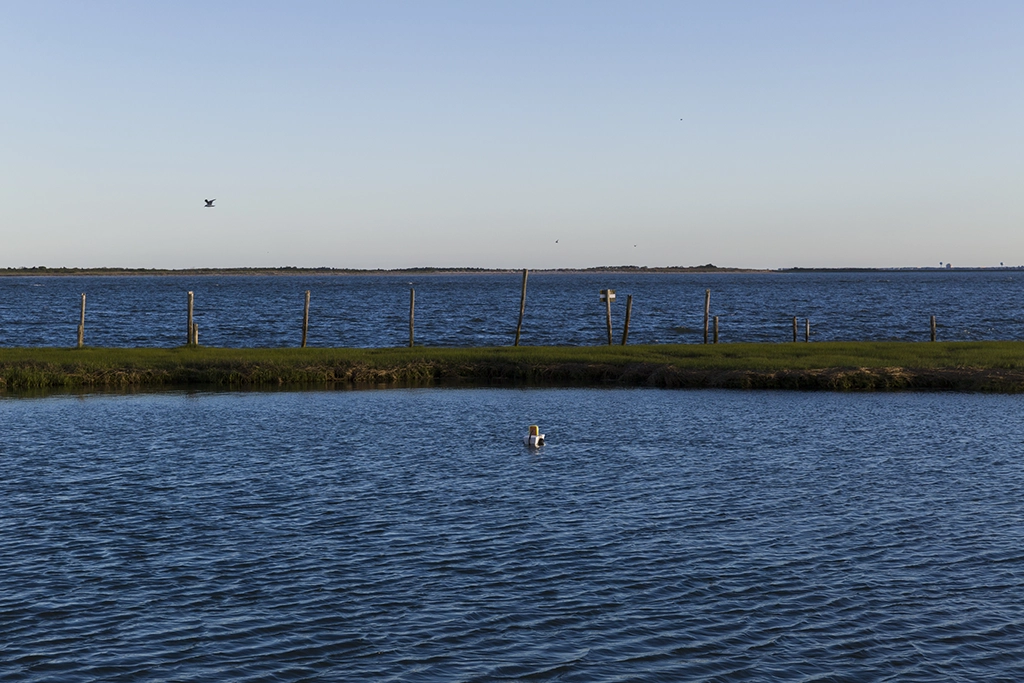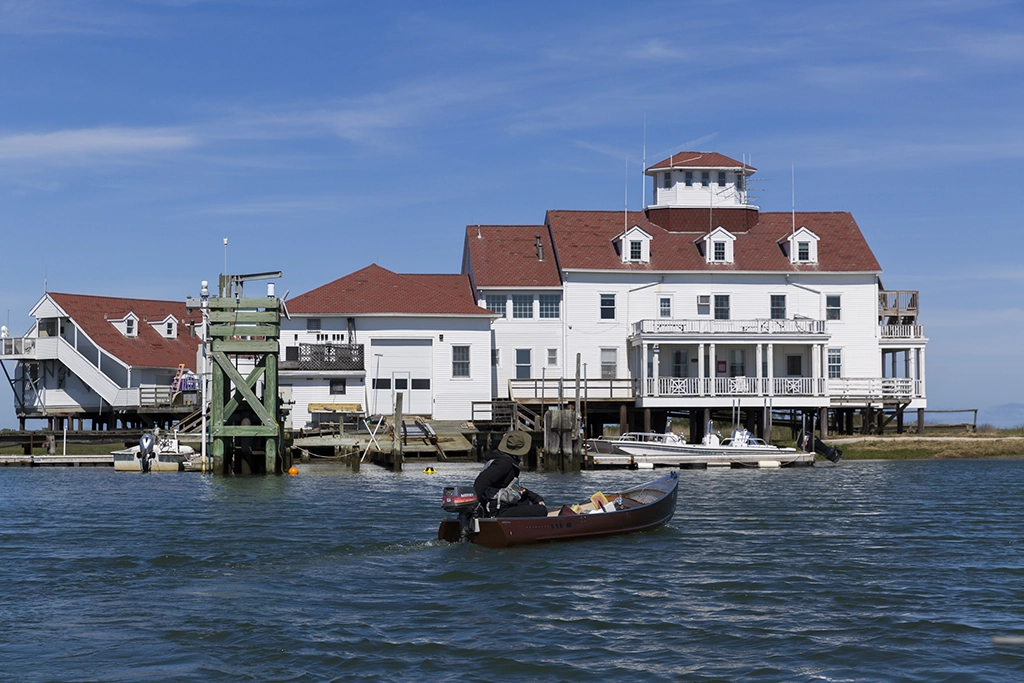Dan Lucal, an artist currently enrolled in the Masters of Fine Arts program at the Rutgers University Mason Gross School of Art, is installing two floating sculptures in the Rutgers University Marine Field Station boat basin on Saturday May 11th. The sculptures will remain in the water for a period of up to a year.
Each sculpture consists of a piece floating on the surface of the water, a buoy-like object moored to a cast concrete sculptural anchor piece resting on the seafloor. These Bouy-like objects, or “floaters” as Lucal playfully calls them, are
meticulously fabricated from salvaged materials: old styrofoam, a curved section of 2 inch square galvanized steel tubing off an old boat trailer, sections of a foam roller for massaging sore muscles, salt bricks and plexiglas the artist found in the trash, rubber tubing from a video dolly track, sheet metal from an old aluminum folding table, and
packing tape.
The floaters were featured in the first year MFA show at the Mason Gross Galleries in New Brunswick in November 2023. “They seemed a little lost in the white-cube gallery space.” Says Lucal “I tested them in the Raritan river before the show, and they came alive in the water.”
“I reached out to Operations Manager Roland Hagan at RUMFS in search of a safe place to deploy the sculptures in the water for an extended duration. I love the way the ocean takes its toll, and leaves its patina on everything it touches. I’m interested in seeing how these artworks will weather after months of exposure.”
The sculptural concrete anchor pieces were cast this spring to serve as mooring blocks for the floaters. They are squid-like and jellyfish-like in appearance, yet were cast inside familiar objects. One in a plastic trash can, the other in an upside-down traffic cone. Although the traffic cone and trash can determine the siloette of the anchors, their presence is not immediately apparent. “Once they’re down in the water, they’ll be mostly invisible, covered in sand and mud. I put a lot of time and energy into making these anchors, and putting them underwater where no one can see them feels
like an important contradiction. There’s a lot happening under the surface that goes unseen,” Lucal continues, “I’m sure there’ll be millions of tiny life forms encountering these anchors in the boat basin, something will grow on them, I’m hoping for barnacles. My artwork is big in the plankton scene right now.”
Installation activities, as well as the ongoing exhibition of the floaters, will be
streamed live and viewable 24/7 on the RUMFS dock cam.
https://rumfs.marine.rutgers.edu/dock-cam
